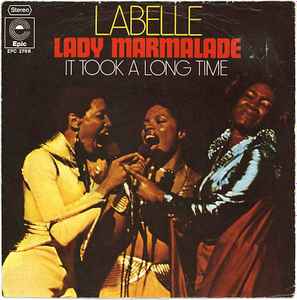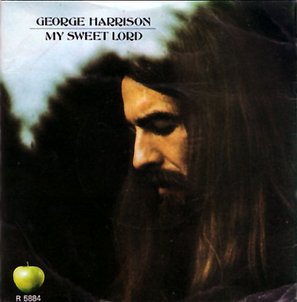 From the first shrill squeal of the slide guitar to the barreling chorus warning that “you better watch your speed,” “Casey Jones” barrels out of the speakers like a runaway train. It’s a track that’s cheeky and cautionary, playful and profound, rooted in American folklore and yet defiantly countercultural. Released in 1970 on the Workingman’s Dead album, “Casey Jones” is among the most recognizable songs by the Grateful Dead — a band not known for chart-toppers or succinct radio cuts. Its simplicity, singalong quality, and paradoxical nature — upbeat in tone, yet dark in content — has made it one of the rare Dead songs that reached far beyond the tie-dye circles and jam band faithful, embedding itself in American rock mythology.
From the first shrill squeal of the slide guitar to the barreling chorus warning that “you better watch your speed,” “Casey Jones” barrels out of the speakers like a runaway train. It’s a track that’s cheeky and cautionary, playful and profound, rooted in American folklore and yet defiantly countercultural. Released in 1970 on the Workingman’s Dead album, “Casey Jones” is among the most recognizable songs by the Grateful Dead — a band not known for chart-toppers or succinct radio cuts. Its simplicity, singalong quality, and paradoxical nature — upbeat in tone, yet dark in content — has made it one of the rare Dead songs that reached far beyond the tie-dye circles and jam band faithful, embedding itself in American rock mythology.
The origin of “Casey Jones” is almost as storied as the Dead themselves. The lyrics draw from the legend of the real-life train engineer John Luther “Casey” Jones, who died in 1900 while trying to slow down a crashing locomotive to save his passengers. It’s an enduring tale of working-class heroism that has been immortalized in folk songs, cartoons, and now, courtesy of the Grateful Dead, reimagined as a cocaine-fueled, rock-and-roll cautionary tale. Dead lyricist Robert Hunter twisted the tale, putting the iconic engineer “high on cocaine” as he hurtles toward doom, while Jerry Garcia laid down a rolling guitar lick that mimicked the wheels of a speeding engine clattering along the rails.
By 1970, the Grateful Dead were at a crossroads in their musical identity. Their earlier albums — notably Anthem of the Sun and Aoxomoxoa — leaned heavily into psychedelia and experimental improvisation, with chaotic studio techniques and cryptic lyrics. But Workingman’s Dead, which houses “Casey Jones” as its closer, marked a seismic shift. It was stripped-down, rootsy, and Americana-infused, drawing more from folk, country, and bluegrass than acid trips. The album, and “Casey Jones” in particular, reintroduced the band as songwriters rather than sound explorers — even though the Dead never truly abandoned their sonic voyages on stage.
“Casey Jones” thrives on dualities. It’s catchy but sinister, funny but foreboding. The central character is both the antihero and the doomed everyman, plowing forward with confidence despite all the signs screaming that disaster is inevitable. It’s tempting to read the song as a drug parable — a nod to the stimulant culture of the time, or even a warning to the audience about pushing limits too far. But Hunter, who wrote the lyrics, often resisted literal interpretations. While some critics take the cocaine reference at face value, others see it as metaphor — a broader critique of reckless ambition, or blind pursuit of momentum, regardless of the consequences.
Garcia’s vocal delivery is relaxed, almost smirking, as he recounts the tale. He doesn’t mourn Casey — he rides along with him. This detached tone is what makes the song even more chilling. We’re not standing back watching a tragedy unfold; we’re on the train, bobbing our heads, shouting “watch your speed!” as if we’re not also passengers on the same doomed route. The band’s instrumentation mirrors this energy: the main guitar riff is bright and chugging, complemented by tight, clipped rhythm guitar and a backbeat that keeps the tempo urgent but not frenetic. It feels like rockabilly soaked in West Coast acid. Phil Lesh’s bass lines roll along like railroad ties while Bill Kreutzmann’s drumming clacks and crashes like gears misfiring in the distance.
What makes “Casey Jones” so enduring is that it stands apart from most Grateful Dead songs. While tracks like “Dark Star,” “Eyes of the World,” or “Playing in the Band” function as scaffolding for long improvisational journeys in live shows, “Casey Jones” is a tight, structured song. It has verses, a memorable chorus, and a bridge — a real pop song, essentially. The Grateful Dead didn’t write many of those. But what makes it distinctly Dead is its attitude: sardonic, playful, mysterious. Even when they did write a concise tune, they couldn’t help but subvert expectations.
Despite being so iconic, “Casey Jones” was not a staple in the band’s live performances in their later years. It appeared regularly throughout the early 1970s but was largely shelved after the late ’70s. The band, always chasing new roads and wary of becoming jukeboxes for their own hits, often retired songs once they became too closely associated with mainstream success. This decision to leave “Casey Jones” mostly behind in concert adds to its mystique. It became almost a mythic tune, one you heard on the radio, on classic rock playlists, or from Dead bootlegs, but not often at shows. And when they did bring it back — sporadically in the ’80s or in one-off revivals — it always felt like a knowing wink to its own legend.
The song’s presence in popular culture has never waned. “Casey Jones” has been used in films, commercials, and television. It’s the kind of song that lives on even among those who don’t identify as Deadheads. Part of that is due to its bluntness. A lyric like “driving that train, high on cocaine” is impossible to forget, and its visceral imagery crosses cultural lines. Whether it’s played as a rebellion anthem, a joke, or a warning, the song adapts. It has that rare flexibility of true rock classics: it can mean different things to different people, across generations.
There’s also a uniquely American sensibility to “Casey Jones.” The character is archetypal: the noble worker who becomes a victim of his own dedication and speed. Yet the Grateful Dead’s twist on that mythology reflects the countercultural cynicism of the late ’60s. This is not the hero who dies for duty — this is the man who dies because he was too coked out to slow down. And that metaphor, in a broader sense, resonates with a generation who had seen the collapse of idealism into disillusionment. The Summer of Love gave way to Altamont, to Vietnam, to Watergate. Momentum, once seen as progress, now carried the risk of derailment.
“Casey Jones” is a song about warning signs ignored. The narrator tells us plainly that the engineer is speeding and high, and that “trouble ahead, trouble behind.” It’s practically shouted from the rooftops. Yet the train keeps barreling forward. It’s a metaphor not just for individual self-destruction, but for the reckless systems people get caught up in — be it politics, war, fame, addiction, or capitalism. There’s something haunting about how gleefully the song invites you to sing along to impending doom. That’s the Dead’s genius — wrapping darkness in danceability, cloaking cynicism in joy.
Musically, it’s one of the Dead’s most accessible creations. Its major-key progression, tight structure, and lack of noodling mean it fits comfortably alongside other FM radio staples of the 1970s. It’s no coincidence that it became one of the few Grateful Dead songs to get significant radio play. But even so, it never feels sanitized. There’s something slightly unhinged beneath its surface — a restless energy that keeps the song from becoming background music. Like its namesake train, “Casey Jones” doesn’t let up until it crashes.
Beyond the track itself, “Casey Jones” symbolizes a pivotal moment for the Grateful Dead. Workingman’s Dead and its sister album American Beauty, released later that same year, were creative rebirths. They stripped away the swirling effects and studio chaos of earlier works, focusing instead on harmony, craftsmanship, and melody. “Casey Jones” was proof that the Dead could write a killer rock song as easily as they could jam for thirty minutes on a single chord. And it proved to skeptics that this band had substance and style — that their countercultural identity didn’t mean they were incapable of songcraft.
In the decades since its release, “Casey Jones” has outlived its era. It has survived shifts in taste, the death of Jerry Garcia, and the changing face of rock music. Like the tale of the engineer who inspired it, the song lives on in multiple forms — a folk myth turned rock legend, constantly reinterpreted by those who hear it. And while the band may have moved past it in their live sets, the audience never really did. Fans still yell out for it at Dead & Company shows, knowing full well it won’t be played. It’s become a kind of sacred ghost in the Dead canon — a relic of the time when the band tried on structure and found it fit, if only for a little while.
“Casey Jones” isn’t just about a train wreck. It is a train — loud, fast, funny, dangerous, and iconic. And like all great trains in American lore, it’s still running, somewhere out there, chugging along in the collective memory of rock and roll.


